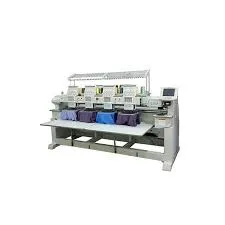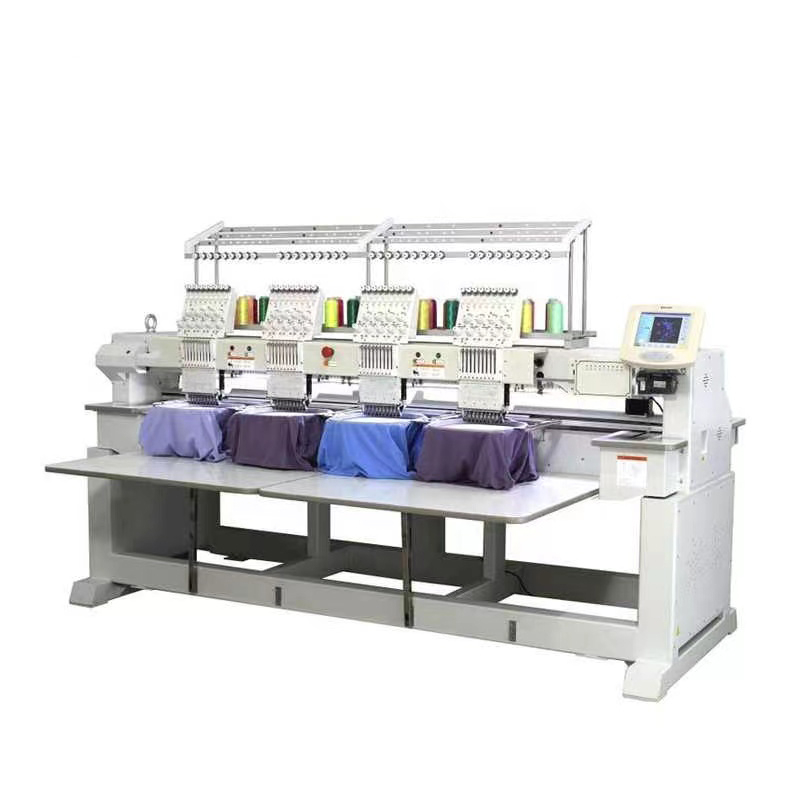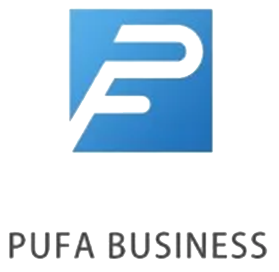jul . 06, 2025 07:09 Back to list
High Speed Computerized Embroidery Machine – 6 Head 15 Needles, Single Head for T-Shirt Logo, Factory Direct Sale
- Introduction to embroidery machine computerized
technology and its evolution - Technical advantages and innovations in computerized embroidery
- Choosing between high-speed, multi-head, and single-head models for different needs
- Comparative analysis of top industrial embroidery machine manufacturers
- Customization and design flexibility with multifunction embroidery machines
- Industry applications and real-world success stories with case studies
- Future trends and outlook for embroidery machine computerized solutions

(embroidery machine computerized)
Embroidery Machine Computerized Technology: The Start of a Creative Revolution
Over the past decade, the embroidery machine computerized sector has radically transformed how industrial embroidery is approached, handling projects with precision, consistency, and speed beyond the capability of manual processes. Once reliant on labor-intensive craftsmanship, the industry now leverages digital programming for patterns, intricate designs, and mass customization. According to Global Industry Analysts, the global market for computerized embroidery machines is expected to exceed $2.1 billion by 2026, driving innovation in both the textile and apparel markets. Machines such as the high speed computerized flat 6 head 15 needles embroidery machine and the single head computerized embroidery machine for t shirt logo label production enable manufacturers to deliver flawless branding, logos, and decorative work at an industrial scale. This technological leap has democratized access, making advanced embroidery capabilities available not only to large factories but also to SMEs attracted by automation and reduced overhead costs.
Technical Advantages: Innovation Driving the Next Generation
The introduction of modern computerized embroidery machines has led to notable advancements in efficiency, versatility, and quality. High-speed memory, advanced servo motors, and intelligent thread management systems now enable devices like the high speed computerized flat 6 head 15 needles embroidery machine to reach production speeds of up to 1200 stitches per minute, a rate previously unattainable. These machines support automatic color change, auto-trimming, and real-time error detection, drastically minimizing downtime. With built-in memory capable of storing thousands of intricate patterns, organizations can respond instantly to changing market demands. Multifunction embroidery machines further incorporate modules for sequins, cording, and cutwork, empowering operators to switch between tasks without manual intervention. The digital interface now supports intuitive pattern editing, direct USB import, and wireless networking, connecting floor supervisors, designers, and operators into a seamless production workflow. This convergence of technology not only accelerates time-to-market but also reduces manual error, ensuring consistency across large production runs.
Matching Machine Types to Business Needs: Single vs. Multi-Head Solutions
Selecting the right embroidery machine involves striking a balance between production scale, design complexity, and cost-efficiency. For medium to large enterprises, high speed computerized flat 6 head 15 needles embroidery machines are ideal, enabling multiple pieces to be produced simultaneously – a key consideration for uniforms, bulk logo production, and industrial contracts. These machines often boast larger sewing areas, robust heads, and the ability to handle diverse fabrics, from silk to denim. Conversely, startups and custom apparel businesses gravitate towards single head computerized embroidery machines, optimized for flexibility, quick changeovers, and one-off designs, such as t shirt logos and personalized emblems. The table below summarizes key differences and operational statistics, equipping businesses with actionable data to guide investment decisions.
| Feature | Single Head Computerized | Flat 6 Head 15 Needles |
|---|---|---|
| Max Speed (Stitches/min) | 1000 | 1200 |
| Embroidery Area (mm) | 400 × 500 | 400 × 650 |
| Patterns Storage | 1000+ | 2000+ |
| Average Power Consumption (kW/h) | 0.7 | 1.8 |
| Operator Requirement | 1 per machine | 1 for 6-head |
| Typical Use | Custom branding, small batch runs | Mass production, uniforms, large contracts |
| Changeover Time | Fast (under 2 minutes) | Moderate (about 5 minutes) |
Comparing Computerized Embroidery Machine Factories: Who Leads the Industry?
Market competition is intensifying as factories invest in automated production lines and robust quality assurance systems. Leaders in the computerized embroidery machine factory sector are recognized for their innovation, aftersales support, and commitment to energy efficiency. For instance, Tajima and Barudan maintain global influence through reliable multi-head machines and extensive international networks. Emerging players such as ZSK and SWF push the boundaries with IoT capabilities and adaptive tensioning. Price points, warranty periods, and user training options can vary widely; thus, choosing the right partner is pivotal. Below is a comparative table showcasing different manufacturer offerings for businesses at varied investment levels.
| Factory | Model Spotlight | Speed (Stitches/min) | Warranty (years) | IoT Features | Support Network |
|---|---|---|---|---|---|
| Tajima | TMAR-KC Type 2 | 1200 | 2 | Yes | Global, 40+ Countries |
| Barudan | BEKY-S1506CII | 1000 | 3 | Yes | Asia, Europe, NA |
| SWF | MAS-12 | 1100 | 2 | Advanced | Asia, North America |
| ZSK | Sprint 7 | 1200 | 2 | Yes | Germany, Europe, US |
Evaluating factors such as return on investment, spare parts accessibility, and upgrade paths is crucial. Technical helplines, training modules, and responsive onsite support increasingly influence purchasing decisions, particularly for operations scaling from basic to advanced automation.
Customization and Multifunctionality: Solving the Modern Embroidery Puzzle
At the heart of industry transformation are multifunction embroidery machines, adaptable to a diverse array of textiles, accessory types, and design aesthetics. Modern units integrate advanced servo-driven axes, modular panels, and swappable hoops, supporting the dynamic requirements of fashion labels, sports apparel companies, and promotional material suppliers. User-friendly touchscreens, drag-and-drop design software, and machine vision for automatic alignment empower even non-experts to realize sophisticated patterns. Companies can offer rapid prototyping for new logos, experiment with specialty threads, and achieve photorealistic shading effects. Furthermore, built-in networking and cloud backup mean pattern libraries and job histories are accessible enterprise-wide, facilitating brand consistency and streamlining approval workflows. On the factory floor, these advances translate into shorter lead times, fewer defects, and robust scalability for boom seasons.
Applications and Success Stories: Realizing ROI Across Industries
Multipurpose computerized embroidery machines have catalyzed new business opportunities across sectors—garments, automotive interiors, corporate branding, and even personalized home furnishings. One leading case study involves a mid-sized European apparel company that grew its on-demand T-shirt logo service by 250% within 18 months, attributed to their deployment of single head computerized embroidery machines. This facilitated ultra-rapid changeovers, reduced minimum order quantities, and delivered consistent branding quality across product lines. In another example, a high-volume uniform supplier in Southeast Asia adopted a bank of 6-head 15-needle machines. Their rejection rates dropped from over 4.5% to less than 1.2% quarter-on-quarter, allowing for contract renewals with global hotel chains and airline companies. According to a 2023 market report, companies utilizing state-of-the-art embroidery solutions reported average productivity gains of 28% and order cycle reductions of 35%. The blend of scalable automation, proven durability, and design agility is fundamental to these success stories, continually redefining best practices in textile manufacturing.
The Future of Embroidery Machine Computerized Solutions: What Lies Ahead?
As the global demand for fast fashion, personalized products, and sustainable manufacturing surges, the embroidery machine computerized market is poised for even greater expansion. Innovations on the horizon include AI-powered pattern optimization, fully automated color calibration, and real-time order tracking—promising further leaps in productivity and differentiation. Environmental concerns are also driving manufacturers to introduce energy-saving servo systems and recyclable components. Factory-to-factory digital integrations will enable smarter supply chains and better collaboration across international markets. Whether for mass customization or intricate single-piece artistry, computerized embroidery technology remains at the core of the textile revolution, setting new standards for quality, efficiency, and creativity. Organizations investing in future-ready, adaptable machinery stand to lead an industry moving rapidly toward interconnected, data-driven production landscapes.

(embroidery machine computerized)
FAQS on embroidery machine computerized
Q: What is a high speed computerized flat 6 head 15 needles embroidery machine used for?
A: It is used in industrial settings for mass production of intricate embroidery designs. The 6 heads and 15 needles allow simultaneous multi-color stitching, increasing efficiency. Ideal for large-scale orders.Q: Can a single head computerized embroidery machine be used to make t-shirt logos and labels?
A: Yes, single head machines are perfect for customizing t-shirts, logos, and labels with precision. They suit small businesses and startups. Their multifunction capabilities make them versatile for various fabrics.Q: What are the advantages of buying from a computerized embroidery machine factory?
A: Purchasing directly from a factory often ensures better pricing and after-sales support. Factories can offer customization and training services. Plus, you'll get authentic warranty and spare parts.Q: Are used industrial embroidery machines a good investment?
A: Used machines can be a cost-effective solution for expanding production with lower upfront costs. Ensure the machine is well-maintained and from a reputable seller. It's ideal for businesses scaling up.Q: What multifunction features do modern computerized embroidery machines offer?
A: Modern embroidery machines support multiple needle counts, custom design uploading, and automatic thread cutting. Some models have touchscreen controls for ease of use. These features improve productivity and creative flexibility.-
Pro T-Shirt Embroidery Machine: Multi-Head, 12 & 15 Needle
NewsAug.21,2025
-
Professional 6 Head Embroidery Machine for High-Volume Production
NewsAug.19,2025
-
Professional Embroidery Machine for T-Shirts & Apparel
NewsAug.18,2025
-
Best Industrial Embroidery Machines for Sale - Computerized, Automatic
NewsAug.17,2025
-
Professional Embroidery Machine: High-Quality T-Shirt Production
NewsAug.16,2025
-
Affordable Computer Embroidery Machine Prices & Deals
NewsAug.15,2025

Copyright © 2025 Xingtai Pufa Trading Co., Ltd All Rights Reserved. Sitemap | Privacy Policy
